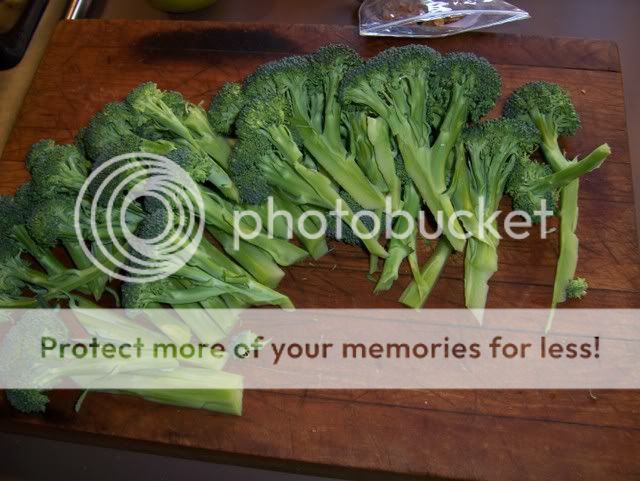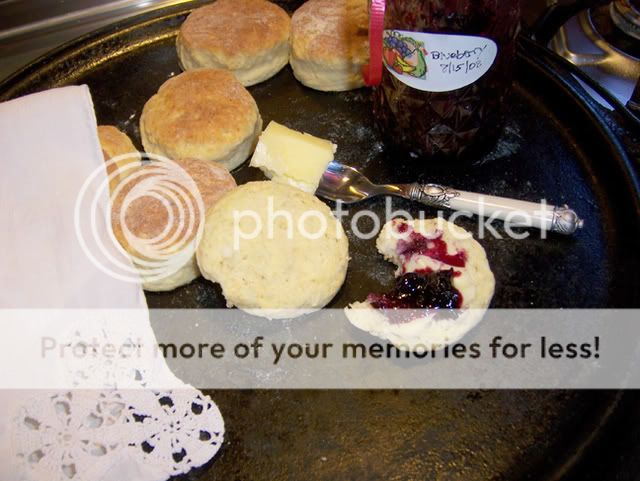Okay, now that everyone’s greeting me with a grin and a “Sooooooooo, you don’t like Kale either, huh?”, I’ll confess to another character flaw – and that is that broccoli, of all things, had lost its appeal to me.“Broccoli,” you say, “well then what green vegetable’s LEFT to eat in the winter?”Exactly!
The situation was dire – DIRE, I say! I used to like broccoli. Had they changed it in some way, as they changed pork? I hear the most well-intentioned people bragging about their pigs being bred for LEAN. Who in god’s name wants a pork chop bred for lean? It’s that old cholesterol scam, punishing the American palate and environment by insisting that cholesterol in one’s food translates directly to plaque build-up in one’s arteries.
But what could they possibly have done to broccoli? And why?
Suddenly, boiling it or steaming it leaves the stems as hard as something you’d chuck into the fireplace to burn all night, and the blossoms mushy. Ick. Stir frying was kind of the same thing – take your choice of well-done or woody. And where’s the taste. I roasted it, because, like Kale, roasted broccoli has lots of adherents fainting with pleasure. Didn’t turn me on. Not one iota – charred at the edges, while everything else remains challenging, unless you char it clean through, and then you’ve got, well, a mouthful of ashes.
But I love, love, love broccoli raab, that slightly bitter green that LOOKS like baby broccoli but tastes so GOOD, and tangy, the bitterness mellowed by olive oil and garlic, then brought back to kingliness by a sprinkling of hot pepper flakes. Just like
Al Ducci’s, down in Manchester, does it. I could eat that all day, and sometimes do!
By the way, raab, or rapini, or even rape, is more closely related to the turnip than to broccoli, the stems are thinner than broccoli, it’s leafier, and the heads are small and numerous. You eat them all.
And the way you achieve that flavor and texture is to toss the raab into boiling salted water and bring it just back to boiling, hold it there maybe a second more, then drain it. In the meantime you’ve warmed about a quarter of a cup of olive oil in a sauté pan with a finely chopped clove of garlic. When the raab is drained, and the garlic has had time to flavor the olive oil without turning a bit brown, turn the heat to high under the pan, and when the oil is hot (don’t let that garlic turn) throw in the raab and shake, rattle and roll until the raab is hot, has cooked a couple minutes more and is, my goodness, coated with the oil. Sprinkle with salt to taste, then a teaspoon or so of hot pepper flakes, and there we go! Serve it warm or even cold. Put it in a sandwich. Al Ducci’s makes a raab sandwich on their little flatbreads that are split in half, with Al Sheps’ fresh mozzarella and lots of that garlic olive oil. It is a treat!
So! Why not try that same thing with regular broccoli. I trimmed the stems, peeled them, then split the stems in quarters and pulled them apart without cutting the blossoms, and proceeded. I knew it was good for supper that night, but when I found myself at the counter next day eating it cold, straight from the fridge, for breakfast, I knew I’d got it right.

Now if it was that good by itself, imagine how good it’d be on a pizza.
Pizza Brocc
This is a quick crust that rises usually for no more than an hour. I use half of it for one pizza, and bake off the rest as a fat flatbread. It rises quickly because of the large amount of yeast and the warm water. I sometimes use quite hot water. The unbaked portion can be wrapped securely in plastic and stored for a day and a night in the fridge. I make this with a an electric mixer using a dough hook. The metal bowl of the mixer, when fitted tightly with a plastic bag and placed in a warm place – I place it on top of the pilot light of my range grill – provides the perfect environment for rising.
For the crust:• 4 cups flour
• 1 teaspoon sea salt
• 3 tablespoons olive oil
• 2 rounded teaspoons yeast
• 1 ¾ cups warm to hot water
Whisk the first four ingredients together, then slowly add the water while the mixer is doing its thing. Beat the dough for several minutes to develop the gluten, then place a plastic bag over the bowl and leave it in a warm place to rise.
Prepare the fillings (for one 14-inch pizza): • ½ onion finely chopped
• 1 or 2 cloves garlic chopped fine or sliced thin
• 2 cups grated cheese (mixture of swiss and parmesan is good)
• broccoli or broccoli raab prepared as noted
• whatever else you must have – sliced black olives, slivered mushrooms, thinly sliced cooked sausage; or nothing more. Remember that too many or too much makes a sloppy pizza with unidentifiable flavors.
• Olive oil
Assemble and bake:Heat the oven to 450 degrees. Place your pizza pan in the oven while it heats. I use a heavy cast-iron platter.
Scrape the dough out onto a well-floured surface. Cut in half, form a little loaf with one half and set aside. Roll out the other half to the size of the pan. Take the pan from the oven, drizzle with olive oil, fit the crust onto it, sprinkle with olive oil, sprinkle with salt, sprinkle with ½ of the cheese, sprinkle with the chopped onion and garlic, arrange the brocc over the top, follow with optional additions, then top with the rest of the cheese, slide into the oven, and bake for 20 to 25 minutes, until the top is browned and bubbling.
Proceed with the second pizza, or remember to wrap that dough securely in plastic (so it doesn’t burst out of loose corners) and refrigerate.
 The flatbread
The flatbread
When you’re ready to bake that off, say into a flatbread, take from the fridge, unwrap onto a floured surface, let it come to room temp, heat the oven and pan to 450 degrees, pat the dough into a flattened loaf maybe 8 inches in diameter, take the pan from the oven, sprinkle with olive oil, arrange the loaf on the pan, dimple the top by pressing your fingers in firmly, drizzle with olive oil, sprinkle with thinly sliced garlic, if you like, and sprinkle with salt. Bake off for 20 minutes or until bread is risen and golden.
...a good practice...I’ve been trying to get Dennis Duhaime, the
Co-op’s produce manager, to stock broccoli raab while it’s the season for it. The problem is that he stocks a specialty item and it languishes, and too often gets tossed. Not good for the Co-op’s sustainability! So make it a practice to show him you appreciate his efforts by buying something out of the ordinary when you see it. I bought escarole for that reason, chopped it, sautéed it briefly with garlic in olive oil, then stirred it into mashed potatoes in a classic preparation. I even told him I’d do a demo of broccoli raab if he’d get it in. He sold out of the raab when people could taste it and get a recipe for it. So try something new when you see it, and gradually the Co-op’s selection will broaden. Better yet, bring in a recipe or two to show people how to prepare your heart’s desire. Want to go all the way with it? Tell Dennis you’ll do a demo. That kitchen is very satisfying to work in.
...the Co-op’s own...Peter McGann will be the guest chef on the next edition of
What’s Cookin’ Rutland, to be taped before a live audience at Peg TV on March 16. Peter is the well-known-around-town instructor of the popular cooking classes in Mexican and World-Cuisine at the Rutland Co-op. He’s studied with major chefs and food people including Elizabeth Andoh (Japanese); Diana Kennedy (Mexican); and Paula Wolfert (Middle Eastern).
Peter will chat with host Whitney Lamy about the idiosyncrasies of Mexican food, as he demonstrates some of his techniques in making Chicken Enchiladas in Red Sauce. The audience will have a chance to taste his creations after the show..
What’s Cookin’ Rutland is taped at PEG TV Studios in Howe Center starting at 6PM. Doors open at 5:30 for the seating of the audience. A $10 donation is suggested, and reservations may be had by dialing 508-813-8114.
...words to end this ballad of olive oil and garlic...“I am not trying to torture you, I promise. I know it must seem like I sit around all day, cackling evilly, stroking my black cat, scheming up ways to trick you into eating lima beans and kale, but I don’t. Cross my heart. I don’t even have a cat - although I do sometimes cackle, but never at your expense. Everything I do here, I do out of love.” Sound like anybody you know? Well, it’s not me – though I could have said it – it’s
Orangette, from her blog .
I still don’t know what they’ve done to broccoli, whether it’s a conspiracy or aging tastebuds, but the right technique and enough olive oil and garlic doesn’t harm much of anything!
















